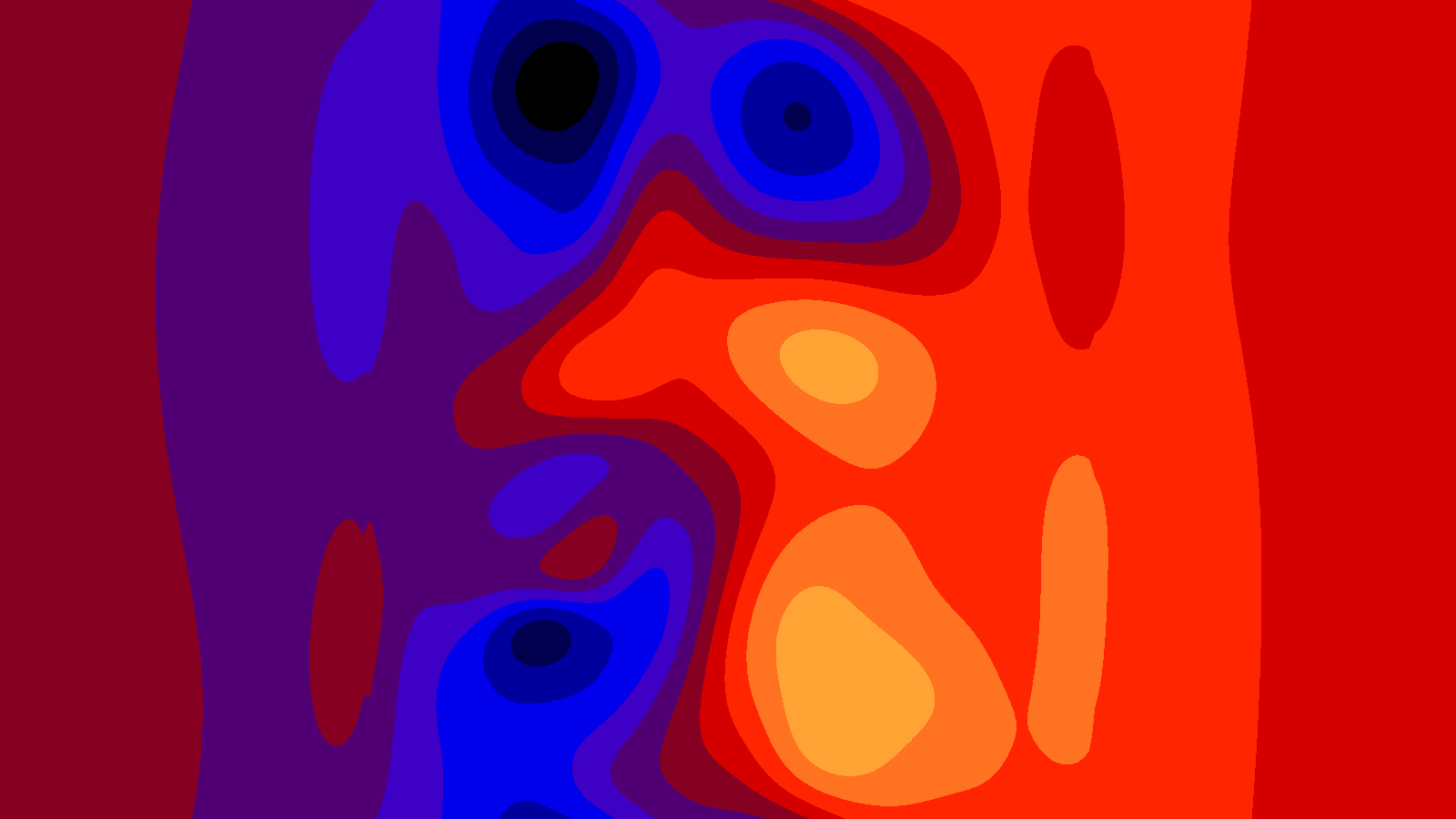Plasmas consisting of electrons and positrons may have previously unexpected instability, which can have impact on astrophysical and lab-based phenomena. DIFFER scientists formed an international team to investigate this exotic state of matter. The results can be used in research on fusion relevant plasmas.
Source: AIP, Anashe Bandari

fluctuations in the positron density
of an electron-positron pair plasma.
Credit: DIFFER, Pueschel
Electron-positron pair plasmas are a class of plasmas with equal masses of matter and antimatter. Found mainly in energetic astrophysical settings and specially tailored experiments, these plasmas are generally thought to be stable under pressure gradients in homogeneous magnetic fields. However, theoretical plasma physicist M.J. Pueschel and his team demonstrated through simulations that electron-positron pair plasmas can develop instabilities and turbulence when physical conditions inject them into a magnetic field.
They found when an electron-positron pair plasma has a pressure gradient within a homogeneous magnetic field, the gradient will excite instability and turbulence within the plasma. As the electric and magnetic fields couple, turbulent transport of heat and particles arises, until a magnetic field gradient is established and suppresses the instability.
If...
The emergence of turbulence has great impacts on plasma applications.“For instance, if fusion plasmas were stable, we might have had all our energy from fusion reactors since the 1970s, and there would be no climate crisis,” said M.J. Pueschel, group leader of DIFFER’s Plasma Microturbulence Group. “Some theories of gamma-ray bursts, which are among the most energetic events in the universe aside from the Big Bang, rely on expanding pair plasma shells, and if the shells individually become turbulent, that could conceivably change the gamma-ray spectrum.”
Using particle-in-cell and continuum simulations, the group was able to study this process in systems relevant to astrophysical and laboratory-based phenomena. With their results, they formulated a mathematically accessible fluid model that captures the instability dynamics in electron-positron pair plasmas.
Magnetic confinement
The current model is sufficient for studying magnetic confinement, though a relativistic extension of the calculation is necessary in order to better apply findings to gamma-ray bursts and laser-based electron-positron experiments.
“The results are useful to study physical mechanisms in fusion relevant plasmas”, Pueschel tells. “We hope to apply this knowledge in future experiments in DIFFERs linear plasma devices MAGNUM-PSI and Pilot-PSI.”
More information
Publication: “Pair plasma instability in homogeneous magnetic guide fields,” by M.J. Pueschel, R.D. Sydora, P.W. Terry, B. Tyburska-Pueschel, M. Francisquez, F. Jenko, and B. Zhu, Physics of Plasmas (2020). doi.org/10.1063/5.0020234.
DIFFER group Plasma Micro-Turbulence, group leader M.J. Pueschel
Go to the News page.